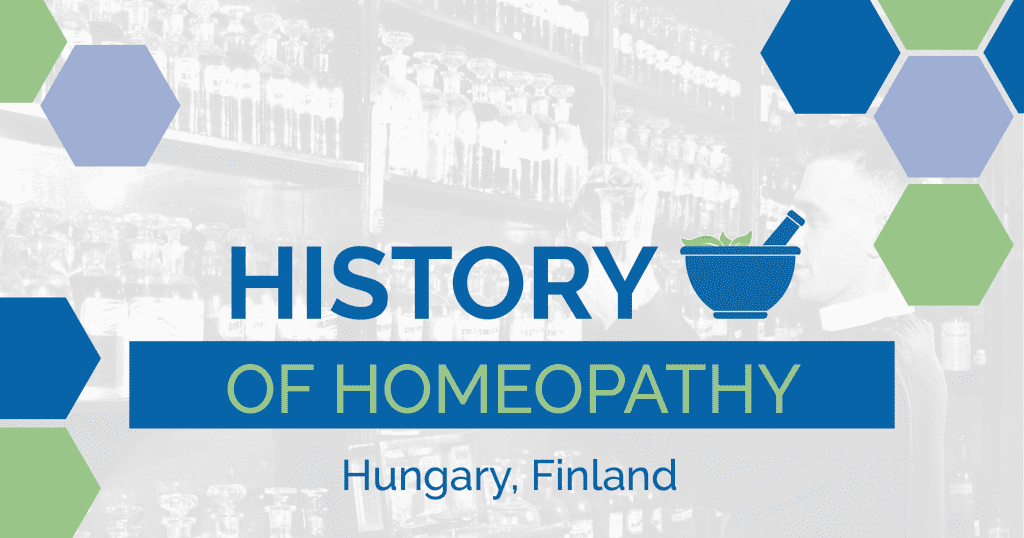Snapshots From There and Then: History of Homeopathy

In honor of AAHP’s 100th anniversary year, we look back at the history of homeopathy to find how this medical modality spread around the world. One also discovers startling vignettes of unexpected paths and outcomes. Readers may know much about homeopathy here and now, but we hope you find our “There and Then” series informative and interesting.
Hungary
It is known there was one homeopathic practitioner in Hungary in 1818; within a few years, many others also started practicing. In the latter part of the 19th century after the two main Hungarian teachers of homeopathy died, the growth of the medical practice slowed considerably. However, numerous 19th century books and pamphlets were published for the general public that led to a period of intense popular use, particularly in rural areas not served by medical doctors. Hungary was also at the forefront of establishing hospitals utilizing homeopathic medicines, with the first opening in 1833. This was followed by almost a dozen others before the turn of the century. One hospital clinic treated more than 46,000 patients in a 27-year period.
The two world wars greatly hindered homeopathy in the first half of the 20th century, and the number of practitioners dwindled precipitously with all but one hospital closing by the 1930s. In 1948 following Hungary’s entrance into the Soviet sphere of influence, homeopathy was banned because “there was no scientific explanation making it compatible with materialism”. After the end of the communist period four decades later, homeopathic medicines were once again legal to use. But by then, the Hungarian public did not know much about homoeopathy, and only a tiny portion of medical doctors were aware of this therapeutic modality.
Since the 1990s, numerous courses and seminars have been organized; more Hungarian doctors have begun to practice homeopathy. A 1997 law regulating alternative medicines specifically states that homeopathy is a “medical method of healing” with only medical doctors allowed to practice it. In the 1930s there were only 10 known practitioners; 60 years later the number had grown to well over 300 and continues to increase annually. A century ago, there were a handful of homeopathic pharmacies which gradually ceased operations in the communist era. There are now two main suppliers of homeopathic medicines, both importing from their home countries.
Finland
Homeopathy’s early history in Finland is full of intrigue and disappointments. While there was support from afar by the Russian Tsar, the local authorities in the 1870s were actively hostile to the single transplanted German practitioner and worked to undermine any possible success he might have had. After a very short period of practice, the physician returned to his German homeland. While homeopathy was widely practiced along the border area with Sweden, it would take another century before homeopathy spread throughout the rest of Finland.
A century later, homeopathy burst forth in Finland. Doctors went to Sweden to learn homeopathy, returned to Finland, and became very active. They eventually created three training programs during the 1990s; each includes a basic medical course taught in conjunction with the University of Helsinki medical school. There are now more than 200 practicing homeopaths, though there is still no official recognition for homeopathic medical practice.
Finnish law has restrictions on pharmacy practice and stringent requirements for available medicines: each homeopathic medicine must be individually registered in Finland. The fees start at approximately $1,025 and go up depending on complexity of the product and whether an initial or renewal registration; the approval process takes longer than six months.
References:
https://www.wholehealthnow.com/homeopathy_pro/hungary.html
https://d-nb.info/990663078/34
